List of Chief Ministers of West BengalThere are many states in India, and one of these states is West Bengal. West Bengal has always been an important state in India. Moreover, when the British came to India, they also first captured Bengal due to its importance. Bengal is developing day by day, and in this progress and advancement, the politicians of Bengal have made a big contribution. So today, in this article, we shall discuss about all the chief ministers of West Bengal. Who is a Chief Minister?Before knowing about all the Chief Ministers of West- Bengal, let us know a little, what is a Chief Minister? As we all know, there is a dual government system in India; one is the state government, and the other is the central government. So, just as the head of the central government is the prime minister, similarly, the chief minister is the head of the government of every state. List of Chief Ministers of West BengalWest Bengal has had only eight chief ministers since 1947, and here, the President's rule has also been imposed 3 times.
The List of All The Chief Ministers of West Bengal1. Prafulla Chandra Ghosh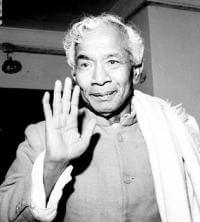
Prafulla Chandra Ghosh was born on 24 December 1891, and he died in the year 1983 on 18 December. He was born in Malikanda, a small village in Dhaka District (This village is in Bangladesh now). His parents' name was Binodini Devi and Purna Chandra Ghosh. He was very good at his studies. He was the first Chief Minister of West Bengal. He joined a very famous college of Calcutta Presidency College as a Demonstrator in 1919. After completing his education, in the year 1920, he started working in Calcutta Mint at the post of ASA Master. Moreover, to work in the position of ASA master, he was the first Indian. Furthermore, in 1920, he was awarded a doctorate in chemistry by the University of Calcutta. Prafulla Chandra Ghosh was very active in politics while studying or working in Calcutta Mint. He actively participated in the Swadeshi Movement, and in 1909 he joined Anushilan Samiti, but he left this Samiti after four years in the year 1913 due to some reason. Then a few days later, he met Surendranath Banerjee, and Surender Nath advised him to follow the non-violent principles of Mahatma Gandhi. In the beginning, Gandhi's non-violent principle could not impress him much, but when he met Gandhi in Kolkata in the year 1920 and heard his speech in Dhaka, it impressed him a lot. In 1921, he resigned from his post as ASA master from Calcutta Mint and joined the country's freedom struggle. His first tenure as a chief minister was for 160 days. And when India became independent on 15 August 1947, he was made the first Chief Minister of Bengal. The then Governor Chakravarti Rajagopalachari appointed him. He was the Chief Minister of West Bengal twice. He became the Chief Minister of Bengal for the first time on 15 August 1947 and remained the Chief Minister of West Bengal up to 22 January 1948. He again became the Chief Minister of Bengal for the second time from 21 November 1967 to 19 February 1968, and his second tenure as a chief minister was for only 90 days. Even though he was the Chief Minister of West Bengal for only 250 days, he did a lot of good work for West Bengal. 2. Bidhan Chandra Roy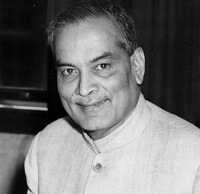
Bidhan Chandra Roy became the second Chief Minister of West Bengal on 23 January 1948. He was a politician, social worker, educationist, physician, and philanthropist and has also been awarded the country's highest civilian award. He was born on 1 July 1882, and he died at the age of 80 in the year 1962 on 1 July. It is a coincidence that he was born and died on the same date. He was born in Bankipore, Patna, the capital of Bihar. His parents' name was Prakash Chandra Roy and Aghorkamini Devi. His father was an excise inspector, and his mother was a social worker. His parents had 5 children, and he was the youngest one. He had two sisters and two brothers named Susharbashini, Sarojini, Subodh, and Sadhan. He was very good at his studies. He did his early education at Patna Collegiate School and did his I.A. from a very famous college, Calcutta Presidency College. He did his undergraduate studies at Patna College, and after this, he took admission to Calcutta Medical College for his further studies. After studying at this college, Bidhan wanted to take admission to St Bartholomew's Hospital, which is in London, for further studies. He gave applications to study there, but the dean of that Hospital rejected his application because he was an Asian student. Still, he did not give up the effort and kept trying every time, but every time his application was rejected. Then, after more than 30 attempts, the dean of St Bartholomew's Hospital was compelled to accept the admission request of Bidhan. After this, he completed his studies there, and he became the Royal College of Physicians, one of the members and a Fellow of the Royal College of Surgeons. Then in 1911, after completing his studies, he came to India from London. After coming to India, Roy joined Provincial Health Service and also used to see patients at very less fees. Along with this, he taught students in many colleges. He taught at Calcutta Medical College, Campbell Medical School, and Carmichael Medical College. Moreover, he played a very important role in establishing many institutes such as Chittaranjan Seva Sadan, Chittaranjan Cancer Hospital, Kamala Nehru Memorial Hospital, Jadavpur T.B. Hospital, and many more. Roy and Mahatma Gandhi knew each other very well. Roy slowly started getting into politics, and in the election of the Bengal Legislative Council in 1925, he contested an independent election from Barrackpore Constituency. In this election, he defeated Surendranath Banerjee, also known as the "Grand Old Man of Bengal." Gradually, he started getting popular in politics. In 1928, he was elected to the All India Congress Committee and also went to jail many times during the freedom struggle. After the independence of India, the Congress party wanted Roy to be the Chief Minister of West- Bengal. Although he did not want to become the Chief Minister, after taking advice from Gandhiji, he agreed to become the Chief Minister of West- Bengal. He took office as the second Chief Minister of Bengal on 23 January 1948 and remained up to 1 July 1962. He was the Chief Minister of Bengal for 12 years and 156 days, and during his tenure, he did everything possible to make Bengal better. People believe that he is the maker of Modern West Bengal. Moreover, on his birthday, National Doctors' Day is celebrated in India, i.e., 1 July. In 1961, two people were awarded the Bharat Ratna, and one of them was Bidhan Chandra Roy. 3. Prafulla Chandra Sen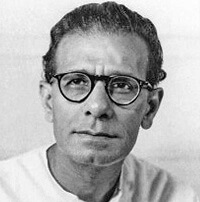
He was the third Chief Minister of West Bengal. Prafulla Chandra Sen was born on 10 April 1897, and he died in the year 1990 on 25 September. He was one of the well-known freedom fighters and politicians. He was born in Senhati, a small village in Khulna District, Bengal, and belonged to Vaidya Hindu Community. Even though he was born in Bengal, he spent most of his childhood in Bihar due to his father's job. He was very good at his studies. He did his early education in Bihar and also took admission to one of the famous institutes in Deoghar, R. Mitra Institute. After this, for further studies, he went to one of the famous colleges of Calcutta, Scottish Church College. After graduating from Scottish Church College with a Bachelor of Science, he wanted to go to England to be an articled clerk. However, after listening to Gandhi's speech in 1920 in Calcutta, he decided not to go to England and joined the non-cooperation movement with Gandhi Ji. Prafulla Chandra Sen was a true patriot. He contributed a lot to the independence struggle of India. He was the staunchest supporter of the Indian National Congress and Mahatma Gandhi. At the same time, he was also greatly influenced by the principles of Gandhiji. He spent about 10 years in jail during the struggle for India's independence. In 1923, Sen was sent to the remote area of the Hooghly District, and that area was someplace of Arambagh. He went to Arambagh and served the people there, and he did a lot of service for the malaria-infested people. Due to this, he is also known as the Gandhi of Arambagh. When India got independence from the British, he was made Agriculture Minister by the second Chief Minister of Bengal, Bidhan Chandra Roy, in 1948, and he was the Agriculture Minister of Bengal till 1967. When Bidhan Chandra Roy died in the year 1962, he became the new Chief Minister of West Bengal. And he remained the Chief Minister of Bengal till 28 February 1967. He was the Chief Minister of Bengal for 4 years and 234 days, and during his tenure, he did everything possible to make Bengal better. 4. Ajoy Kumar Mukherjee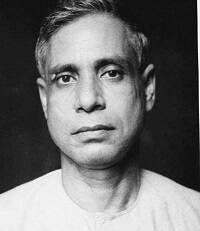
Ajoy Mukherjee, or Ajoy Kumar Mukherjee, was the fourth Chief Minister of West Bengal. He was born in the year on 15 April 1901, and he died in the year 1986 on 27 May. He was one of the well-known independence activists and politicians. He was born in Tamluk, a town in Purba Medinipur District of West- Bengal. He contributed a lot to the independence of India. He was also a member of the Tamralipta Jatiya Sarkar, popularly known as the Tamralipta National Government. He also worked very actively during the Quit India Movement and was a staunch supporter/follower of Swami Vivekananda. When he started his political career, he was one of the workers or members of the Indian National Congress. Still, after some years, he left Indian National Congress and joined Bangla Congress. Gradually, he became very popular and gained recognition in the entire state and party. When elections were held in West Bengal in 1967, he was also contesting the election from the Arambagh constituency, and he defeated Prafulla Chandra Sen from here. Prafulla Chandra Sen was also the chief minister from 1962 to 1967 of West Bengal, and after defeating him, he became the new Chief Minister of West Bengal. He became the Chief Minister for the first time on 1 March 1967 and remained the Chief Minister of West Bengal up to 21 November 1967. After this, he became the Chief Minister twice more but could never complete his full 5-year term as a chief Minister. His first tenure as a chief minister was for 265 days. He again became the Chief Minister of Bengal for the second time from 25 February 1969 to 16 March 1970, and the third time from 2 April 1971 to 28 June 1971; his second tenure as a chief minister was for 1 year, 19 days, and the third tenure was only for 87 days. So, in total, he was the Chief Minister of Benegal for 2 years and 6 days, and during his time, he worked for the progress of West Bengal. He became the Chief Minister twice on the ticket of the Bangla Congress Party (United Front) in the years 1967 and 1969 and once on the ticket of the Indian National Congress party (Democratic Coalition) in 1971. In 1977, he was also honored with the Padma Vibhushan, the country's second-highest civilian award by the Government of India. 5. Siddhartha Shankar Ray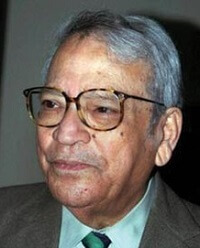
Siddhartha Shankar Ray was the fifth Chief Minister of West Bengal. He was born on 20 October 1920, and he died in the year 2010 on 6 November. He was a well-known lawyer, politician, and diplomat. Apart from being the Chief Minister, Shankar Ray has also been the Education Minister of the country, the Governor of Punjab, and the Ambassador of India to the United States. It is said that at one point, he was one of the biggest leaders of the Indian National Congress and also did exemplary work for the Congress party. He was born in Calcutta. His father's name was Sudhir Kumar Ray, and his mother's name was Aparna Devi. His father was also a politician and barrister, and well-known independence activists Chittaranjan Das and Basanti Devi were his mother's parents. He did his early studies at the Mitra Institution of Calcutta. He was very brilliant in his studies. After this, he got admission to one of the very famous colleges of Calcutta, Presidency College, and later for further studies; he went to the University of Calcutta. He has been very interested in politics since his college days, and apart from politics, he was also very interested in sports. He was elected as the Calcutta University Students Under-Secretary in 1941, and he was also elected as Debate Secretary and General Secretary of the college. He loved playing cricket and football, and he was one of the brilliant cricketers and footballers. Due to this, he was also the captain of his college's cricket and football team. During his captaincy, his team won many matches, and he also scored many runs; in fact, he hit three double centuries. Apart from cricket and football, he also liked to play lawn tennis and table tennis. In the year 1947, After completing his college in Kolkata, he went to the Honorable Society of Inner Temple in London. He liked cricket so much that even after going to London, he didn't leave playing cricket and started playing cricket for the Indian Gymkhana Club. After returning from England, he worked as a junior to Justice Ramprasad Mukherjee. After this, in 1954, in Calcutta, he became the Junior Council of the Central Government. He contested the West Bengal election from the Bhawanipur Assembly seat in 1957 and won with an overwhelming majority. He contested again in the year 1962 and won. After this, he was made the Education Minister of India and the Union Cabinet Minister for West Bengal Affairs. He was also made the Minister of Tribal Welfare and Law Department of West Bengal, and he was also the youngest member of the cabinet. The Congress party won the 1972 Bengal Legislative Assembly election, and he became the new Chief Minister of West Bengal. He was the Chief Minister of West Benegal from 19 March 1972 to 21 June 1977. His tenure as Chief Minister was for 5 years and 41 days. When he became the Chief Minister at that time, lakhs of refugees had come to West Bengal from Bangladesh. So due to this, his administration had to face a lot of difficulties in resettling them all, but Siddharth Shankar Ray handled this problem well with his understanding. After working in West Bengal as the Chief Minister, he was made the Governor of Punjab on 2 April 1986, and he remained in that position till 8 December 1989. In 1991, when the Congress party again came into power in Delhi, he was sent to the United States as India's ambassador in 1992 and was the Indian ambassador till 1996. When he returned to India from the United States in 1996, he worked as a barrister in the Calcutta High Court till 2010. Due to kidney failure, at the age of 90, he died on 6 November 2010. In his memory, Mr. Rajesh Chirimar started the "Siddhartha Shankar Ray Foundation" society. 6. Jyoti Basu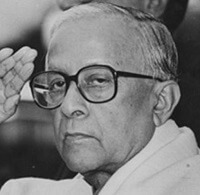
Jyoti Basu was the sixth Chief Minister of the West Bengal, and he is the person who has been the Chief Minister of West Bengal for the longest time. He was born on 8 July 1914, and he died on 17 January 2010. Apart from being the Chief Minister of West Bengal, he also served as the Home Minister, Finance minister, Commerce Minister, General administration Minister, Planning and Development Minister of the west-Bengal. He was also the founder member of the Communist Party of India Marxist, one of the largest communist parties in India. He was one of the renowned leaders of the Communist Party of India (Marxist, Left Front) and also did great work for the party. He was born in Calcutta, and he was from Bengali Kayastha Hindu Community. His father's name was Nishikanta Basu, and his mother's name was Hemlata Basu. His father was a doctor, and a resident of Barudi, a small village in the Dhaka District of Bangladesh, whereas his mother was a homemaker. His parents had three children, and he was the youngest one. Most of his childhood was spent in Barudi, and it is also said that his Barudi house was also converted into a library after his death. He was also affectionately called Gana in his childhood. His schooling started when he was 6 years old. His father admitted him to the Loreto School Kindergarten in the year 1920. In childhood, his name was Jyotirindra, but his father changed his name from Jyotirindra to Jyoti while admitting him to the school. After studying in this school for a few years, he took admission to one of the famous schools in Calcutta, i.e., St. Xavier's School, and completed his 12th from here. After completing class 12th, he took admission to Hindu College, which is in Calcutta, and for further studies, he went to University College, which is in London. He studied law in London and became a barrister at the Middle Temple of London on 26 January 1940. When he lived in London, he gained an interest in politics, and due to this, he participated in a lot of political discourses in London. In addition to his regular curriculum, he has attended lectures in Political Organization, Constitutional Law, International Law, and Anthropology at the London School of Economics. Harold Laski, a very well-known economist, was greatly influenced by his anti-fascism. By 1937, he had become an extremely active member of various organizations. He became a member of the Federation of Indian Students and the India League. During that time, he met Bhupesh Gupta and Snehangshu Acharya, who were people of a communist ideology. In 1938, he was also one of the founder members of the London Majlis and became its first secretary. Furthermore, through the London Majlis, he met famous personalities of India like Subhash Chandra Bose, Jawaharlal Nehru, Krishna Menon, Vijaya Lakshmi Pandit, and many more. By the year 1940, he had returned to India from London. After coming to Calcutta, he worked as a barrister in the Calcutta High Court; along with this, he also joined the Communist Party of India in the same year. He married Basanti Ghosh in 1940, but she died only two years after the marriage. Basu and some of his companions helped many people during that time. In 1943, a famine came to West Bengal, which people still remember, and due to this calamity, many people lost their lives in Bengal. He worked very hard in places like Calcutta and Midnapore to help the people affected by this famine. Due to all this, Jyoti Basu started becoming popular amongst the masses. He always wanted the British to leave India as soon as possible and desired that the Zamindari system be abolished. When India got independence in 1947, Prafulla Chandra Ghosh became the first Chief Minister of Bengal, and he was a member of the Indian National Congress. Jyoti Basu was a member and follower of the Communist Party. In the 1952 state election, Basu won the election from Baranagar Constituency, and from here, Basu's political journey began. After this, he worked very hard, and he tried every possible way to make his party popular in West Bengal. After this, he also won many elections. In the 1977 West Bengal legislative elections, he won the election from Satgachia Constituency and became the Chief Minister of West Bengal. He took over as the 6th Chief Minister of West- Bengal on 21 June 1977 and remained the same for the next 23 years. He was the first person in the history of West- Bengal who served for more than 23 years as the chief minister. He became the Chief Minister of West Bengal 5 consecutive times. His first term was from 21 June 1977 to 23 May 1982; the second term was from 24 May 1982 to 29 March 1987, the third term was from 30 March 1987 to 18 June 1991, the fourth term was from 19 June 1991 to 15 May 1996, and fifth and last term was from 16 May 1996, to 5 November 2000. He was the Chief Minister from 1977 to 2000, and his full tenure was of 23 years and 137 days. During his tenure, he made significant developments in Bengal. He died on 17 January 2010; when he died, there was a wave of mourning in Bengal and all over India. He was one of India's most brilliant and popular regional politicians India ever had. 7. Buddhadeb Bhattacharjee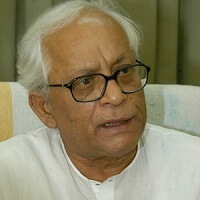
Buddhadeb Bhattacharjee, also known as Buddha Babu, was the seventh Chief Minister of West Bengal and a member of the Communist Party of India (Marxist), Politburo. He was born on 1 March 1944, and today he is 78 years old. He was born in Calcutta, West- Bengal. His father's cousin, Sukanta Bhattacharya, was a very well-known poet. He did his early studies at one of Calcutta's oldest schools, i,e Sailendra Sircar Vidyalaya School. After this, he graduated in Bengali (Honors) from the Presidency College, Calcutta, and after completing his graduation, he joined the Communist Party of India (Marxist) as one of the member. He liked politics from a very early age, and around the year 1968, he was made the State Secretary of the Democratic Youth Federation of the youth wing of the Communist Party of India (Marxist). Later, this Federation was merged with the Democratic Youth Federation of India. He gradually became a well-known name in the politics of West Bengal. In 2000, he became the Chief Minister of West Bengal for the first time. He took over as the 7th Chief Minister of West- Bengal on 6 November 2000 and was the Chief Minister of West Bengal for the next 10 years. His Constituency seat was Jadavpur. His first term was from 6 November 2000 to 14 May 2001, the second term was from 15 May 2001 to 17 May 2006, the third term was from 18 May 2006 to 13 May 2011, and his full tenure as a chief minister was of 10 years and 188 days. Till he remained the Chief Minister of Bengal, he emphasized establishing the new Industry in West Bengal. He offered many Indian and International companies to set up a factory in West Bengal. 8. Mamata Banerjee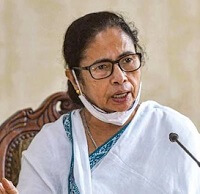
Mamata Banerjee in West Bengal's eighth and current Chief Minister and a member of the All-India Trinamool Congress. She is also the founder and first chairperson of the All India Trinamool Congress. She is West Bengal's first female Chief Minister. She is also known as Didi, which means elder sister. Aside from becoming the Chief Minister of West Bengal, she has also served as the Railway Minister (twice), Coal Minister (the first woman to do so), Union Human Resource Development Minister, Women and Child Development Minister, and Youth Affairs and Sports Minister. She was born on 5 January 1955, and today she is 67 years old. She was born in Calcutta and is from a Bengali Hindu Brahmin family. Her father's name was Promileswar Banerjee, and Gayetri Devi was her mother's name. Her father died when she was only 17 years old, and her father was an independence activist. Mamta Banerjee completed her higher secondary education at Deshbandhu Sishu Sikshalay in 1970. She then took admission to Jogmaya Devi College and completed her Bachelor's degree in history from there. After completing her graduation, she took admission to the University of Calcutta to complete his master's degree in Islamic history. After this, she earned a degree from Shri Shikshayatan College and a law degree from Jogesh Chandra Chaudhuri Law College. Mamta Banerjee has been interested in politics since her college life (Jogamaya Devi college). She also established the Chhatra Parishad, the student wing of the Congress (I) party. She was slowly becoming a name in the Congress party and also worked at various positions within the party. Mamta Banerjee started her political career with the Congress party at a very young age. Due to her hard work, she was also made the General Secretary of the Mahila Congress. In the 1984 election, she was given the ticket from the Congress party to contest the election from the Jadavpur Constituency seat. From here, she defeated Somnath Chatterjee and won the election by a big margin, and she was very young at that time. After this, she also became the Indian Youth Congress general secretary in 1984. After this, she also won the election in 1989, 1996, 1998, 1999, 2004, and 2009 and became the Member of Parliament. She is trying to make West Bengal even better than earlier. In 1997, Mamta Banerjee and some of her associates formed a new party named All India Trinamool Congress after leaving the Congres party due to some differences. After this, the All-India Trinamool Congress managed to get a majority in the elections of West Bengal in the year 2011, and Mamta Banerjee became the new chief minister of West Bengal. Since then till today, she has been the Chief Minister of West Bengal. She took over as the 9th Chief Minister of West- Bengal on 20 May 2011, and her Constituency seat was Bhabanipur. Her first term was from 20 May 2011 to 25 May 2016, the second term was from 26 May 2016 to 4 May 2021, and the third term began on 5 May 2021 and still going on.
Next TopicList of Universities in the US
|
 For Videos Join Our Youtube Channel: Join Now
For Videos Join Our Youtube Channel: Join Now
Feedback
- Send your Feedback to [email protected]
Help Others, Please Share









